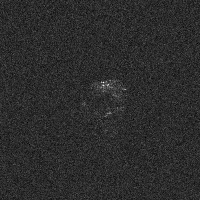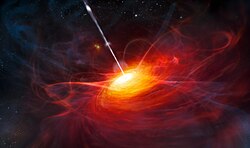 Animation of Arecibo radar images of 2011 UW158 | |
| Discovery [1] | |
|---|---|
| Discovered by | Pan-STARRS 1 |
| Discovery site | Haleakala Obs. |
| Discovery date | 25 October 2011 |
| Designations | |
| (436724) 2011 UW158 | |
| 2011 UW158 | |
| Apollo · NEO · PHA [1] [2] | |
| Orbital characteristics [1] | |
| Epoch 4 September 2017 (JD 2458000.5) | |
| Uncertainty parameter 0 | |
| Observation arc | 5.48 yr (2,003 days) |
| Aphelion | 2.2301 AU |
| Perihelion | 1.0109 AU |
| 1.6205 AU | |
| Eccentricity | 0.3762 |
| 2.06 yr (753 days) | |
| 12.072° | |
| 0° 28m 40.08s / day | |
| Inclination | 4.5717° |
| 286.00° | |
| 8.7537° | |
| Earth MOID | 0.0020 AU ·0.8 LD |
| Physical characteristics | |
| Dimensions | 0.22±0.04 km [3] 0.3 × 0.6 km [4] 0.311 km (calculated) [5] |
| 0.61069±0.00002 h [6] [a] 0.61070±0.00003 h [3] 0.61073 h [5] 0.610752±0.000001 h [7] | |
| 0.20 (assumed) [5] 0.39±0.09 [3] | |
| S [5] | |
| 19.45±0.27 [8] ·19.9 [1] [5] ·19.93±0.11 [3] | |
(436724) 2011 UW158, provisionally known as 2011 UW158, is a stony, walnut-shaped asteroid and fast rotator, classified as near-Earth object and potentially hazardous asteroid of the Apollo group, approximately 300 meters in diameter. It was discovered on 25 October 2011, by Pan-STARRS at Haleakala Observatory on the island of Maui, Hawaii, in the United States. [2]




